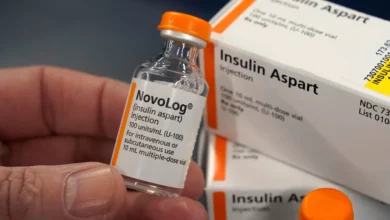
The bitter gourd, alternatively called the balsam pear, is a tropical and subtropical vine widely grown in Asia, Africa and the Caribbean. It serves nutritional and medical purposes.
The plant was introduced in Egypt in the late 1980s by Dr. Souad al-Gengaihi, a biochemist in the medicinal and aromatic plants department at the National Research Centre (NRC).
“We imported the seeds from Germany and started growing this species in Egypt in 1991 because we already knew of the plant’s capability to fight diabetes and we wanted to study it further,” Gengaihi explains.
The bitter gourd’s extract has an insulin-like component that helps reduce the glucose level in the blood of diabetes patients.
“We started growing the gourd on a farm in Giza, and after running a considerable amount of tests, we managed to elucidate the structure of the substance to start our experiments,” explains the biochemist.
To study the effectiveness of this insulin-like substance in reducing sugar levels in the blood, the team of chemists gave rats diabetes then attempted to treat them with the substance, which was administered as a liquid or lyophilized and sprinkled on their food.
“The glucose in their bodies returned to normal levels after absorption, and these experiments encouraged us to cultivate the plant on a much larger scale,” she says.
The National Research Center dedicated three feddans of land in Minya to the cultivation of bitter gourd, and in 2004, it teamed up with Pharco, a pharmaceutical company based in Alexandria, to harvest bitter gourds on a larger scale and produce pills that contain the extract.
To extract insulin, the fruit is squeezed and the juice is filtered. It is then reduced to a powder that is handed over to Pharco, which ultimately turns it into a tablet.
Insulin is traditionally administered through injection because it is broken down by stomach enzymes if taken orally. The novelty of the bitter gourd tablet is that “the fruit’s active ingredients have a special coating that prevents hydrolysis of this substance by enzymes,” explains Gengaihi.
“In 2006, Dr. Moushira Abdel Salam, a professor of internal medicine at NRC, chose 60 type 2 diabetes patients to test the Pharco tablets on,” says Gengaihi. The doctor picked only type 2 diabetes patients, who suffer from insulin deficiency. Sufferers of type 1 diabetes do not naturally produce any insulin as their bodies destroy insulin-producing cells in the pancreas.
As Dr. Emad Nasr, an associate professor of internal medicine who participated in the experiment, explains, “The bitter gourd’s substance stimulates the pancreas into secreting more insulin, but in the case of type 1 diabetics, there’s no possibility for the organ to produce insulin. That’s why we conducted the experiment only on type 2 diabetics, characterized by insulin resistance or insulin deficiency.”
Forty-five percent of the sampled patients reacted positively to the bitter gourd tablets, which effectively reduced the glucose level in their blood. “This result is not great but encouraging,” says Nasr.
The patients who reacted best to the tablets are still in the early stages of diabetes or their condition was recently discovered. These patients reacted positively because they have never been treated with chemicals.
“Chemical treatments have side effects and their distribution in Egypt is very much uncontrolled. The tablets can gradually reverse the effects of the chemicals, but the tablet itself cannot be a sufficient remedy for patients who have previously undergone chemical treatments,” Nasr explains.
Type 2 diabetes accounts for 90 percent of all cases of diabetes and is usually diagnosed between the ages of 35 and 40. It is often, but not always, associated with obesity. It can be genetic or related to a sedentary lifestyle or a fat-saturated diet.
“Urbanization in Egypt has led to less physical activity. This, coupled with the culture of junk food consumption, is the cause of the diabetes boom in this country,” argues Nasr, who also stresses that in recent years, younger patients have been diagnosed with type 2 diabetes with increasing frequency. “This is a new development; it’s not uncommon now to discover type 2 diabetes in teenagers. Often, young patients are first diagnosed as type 1 diabetics, but after further investigation, some actually have a pancreas that secretes insulin,” he explains.
Pharco is still waiting for approval from the Health Ministry to register the tablet and distribute it on the market.
“It seems that they are having a hard time registering the tablet,” explains Gengaihi, “although they finalized it in 2006.”
Gengaihi is now looking at other properties of the bitter gourd, and is particularly interested in directing her research at producing a bitter gourd ointment. “The oil of the bitter gourd seed is very efficient in curing diabetes-related wounds, such as foot sores that commonly become ulcers in diabetics because of their decreased blood flow. This ointment heals wounds very fast,” she says.
Eleven percent of Egyptians have type 2 diabetes, and the Middle East and North Africa region has the highest prevalence of diabetes in the world. Six countries in the region are among the top 10 countries with the highest percentage of diabetes sufferers; Egypt ranks ninth. In Egypt, 42 percent of people with diabetes experience the early stages of eye disease and 5 percent are blind.




